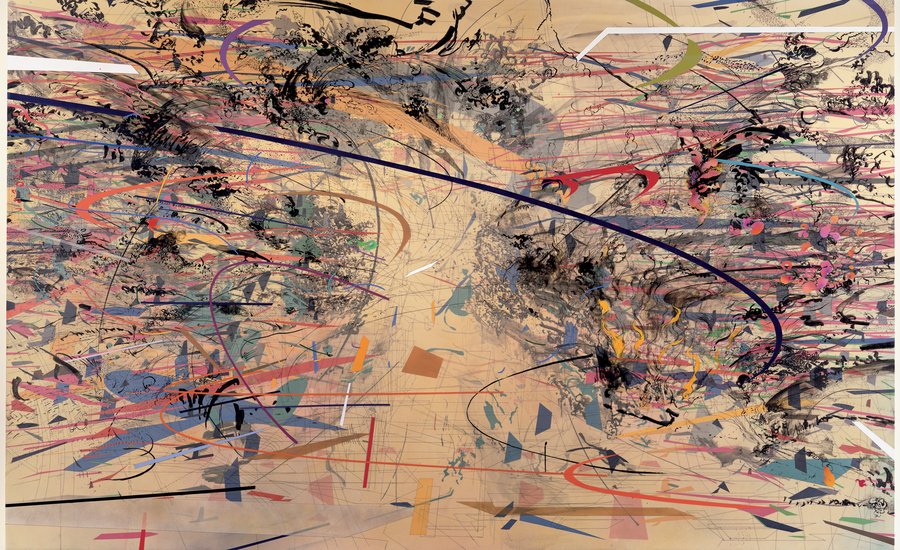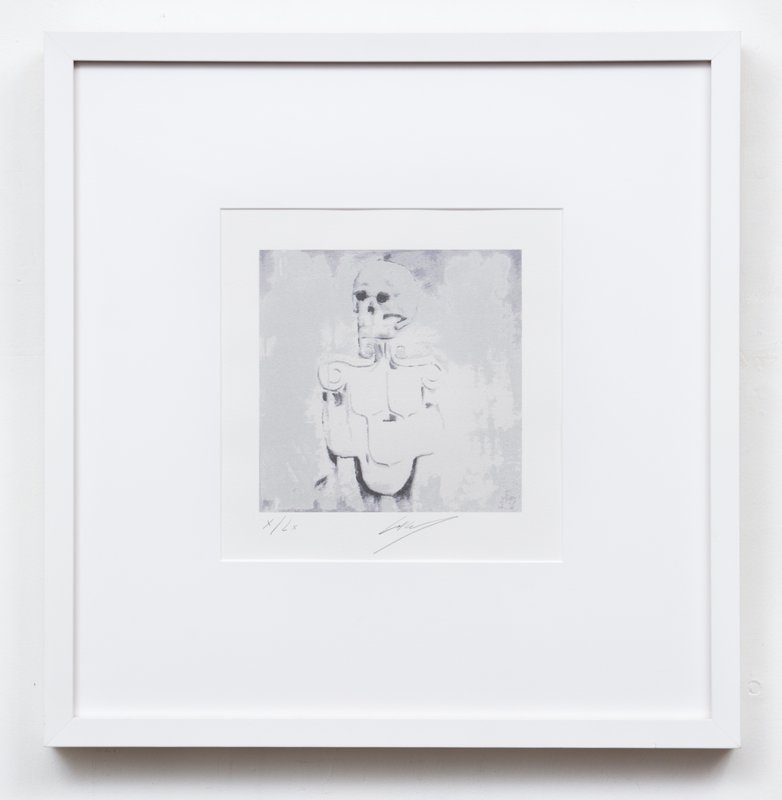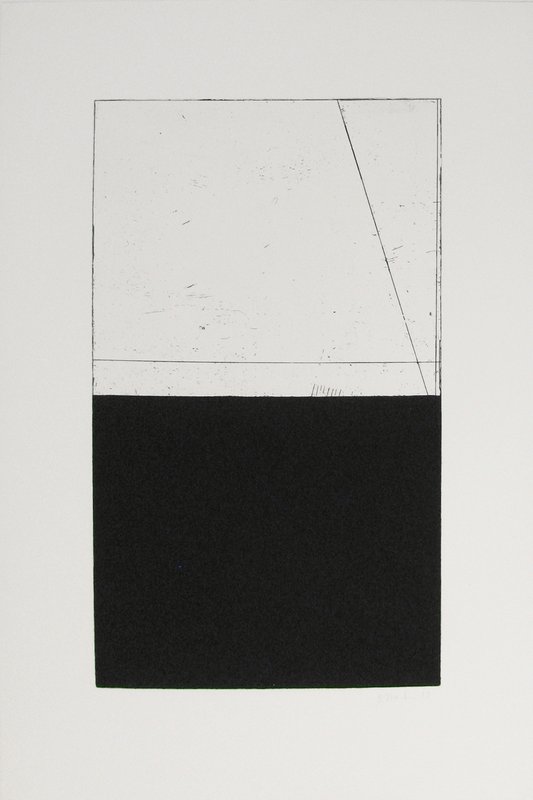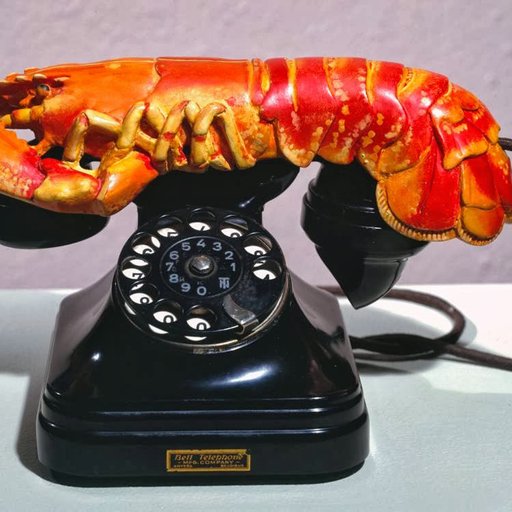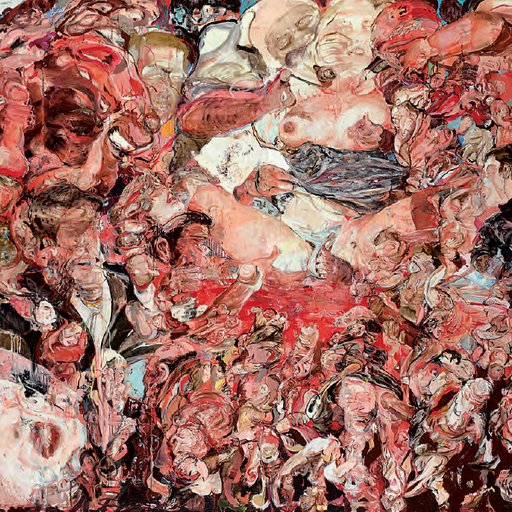It seems like only yesterday that we were anxiously anticipating the shift into a new millennium, with all the hopes and fears that come with the changing times. With 2016 fast approaching, now is the perfect time to look back on the highlights of the past 15 years of painting to see how far we've come and to guess at where we're going. These 12 paintings, excerpted from Phaidon'sThe Art Book, 30,000 Years of Art, and Body of Art, represent a selection of contemporary painting masterpieces from the twenty-first century.
100 YEARS AGO
Peter Doig
2000
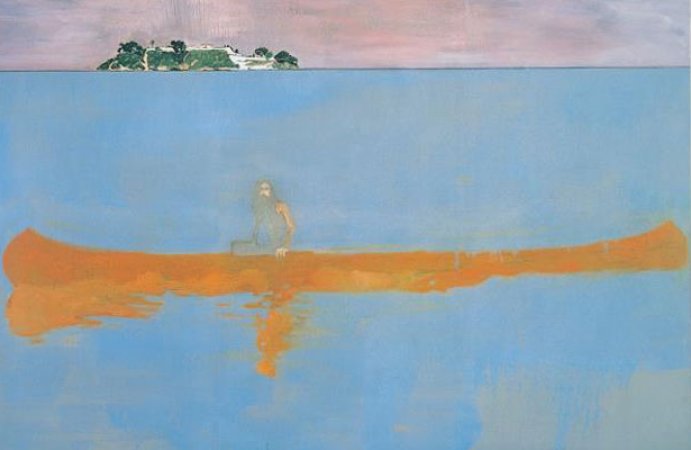
In a canoe sits the ghostly figure of a long-haired, bearded man. He looks towards us. The sea around him is impossibly still, the sky a vivid pink. On the horizon we see an island. Is this the place from where the man has travelled? Was he put adrift? The eerie, spectral feeling of the composition is enhanced by the artist’s application of thin washes of paint. In some areas, the paint has been left to run down the canvas. Whilst the image of the canoe – a recurring motif in Doig’s paintings – has associations with his upbringing in Canada, the artist recalls that he was first inspired to include it in his work after watching the horror film Friday the 13th. The source for the figure in this painting is taken from the cover of the 1972 album Duane Allman: An Anthology, which included a photograph of the band’s bassist sitting in a canoe. The background is derived from a separate photograph depicting Carrera, a prison island off the coast of Trinidad; a country where the artist lived for a short time as a child.
LUMUMBA
Luc Tuymans
2000

Luc Tuymans’s paintings levitate above all that they refer to, providing a strange philosophical distance to historical episodes, figures and references. Describing his approach as "authentic forgery", Tuymans (b.1958) derives his imagery from other pictures and films so that invention becomes a product of reiteration, referral, recollection and duplication. Having once abandoned painting in the early 1980s to study art history and experiment with film, Tuymans returned to the canvas to develop a signature style that seems to throw the slowness of painting against the speed of the photograph, making the labor of the brush visible. With a muted and dirty palette, his small paintings – always created in a single day – achieve a shadowy stillness that conjures a lonely, funereal quality. In this painting, Patrice Lumumba, the first democratically elected prime minister of the Republic of Congo, is rendered in dusty browns and greys. Tuymans painted Lumumba by recalling a photograph of the leader from memory. This method perhaps mirrors the selective memory of Belgium’s colonial past (the Congo was a Belgium colony from 1908 until 1960), and the ensuing silence around the country’s involvement in Lumumba’s assassination in 1961. But where is Lumumba’s gaze directed in Tuymans’s portrait? It is not directly at the viewer but somewhere offside – adrift, detached, alienated and subtly disorientating.
DISPERSION
Julie Mehretu
2002

A densely layered kaleidoscopic mass of colour explodes across the canvas surface. Behind the calligraphic swooshes and monochromatic geometric forms – that appear to swirl around as if caught in some mysterious vortex – lies an elaborate linear structure. It is as if a painting by Kandinsky has collided head-on with an abstract design by Moholy-Nagy or Malevich. Incorporating and combining pre-existing architectural plans and designs, Mehretu’s paintings suggest fantastical new maps that appear to represent both space and time. For the artist, the colorful abstract marks and shapes exist as a type of personal signifier, or language, belonging to the characters that occupy these complex Post-Modern landscapes. Born in Ethiopia, Mehretu later studied in Senegal and the USA. Her paintings bring together formal investigations into color and line, with social issues pertaining to power, history and the formation of personal and cultural identity in the globalized world.
THE TREE
Ibrahim El-Salahi
2003

The story of global modernism is incomplete without Ibrahim El-Salahi (b.1930). Beginning his painting studies in Khartoum in the 1950s, he travelled to London and attended the Slade School of Fine Art, returning to Sudan in 1959. Appointed undersecretary for culture under the Jaafar Nimeiri regime, he was wrongly accused of "anti- government activities" and was imprisoned there in 1975 (where, to avoid the guards’ attention, he drew on small pieces of paper that he buried in the sand). Once released, he moved to Qatar in 1977 where he established a culture ministry. In 1998 he returned to England, settling in Oxford. Throughout this itinerant and strenuous life, El-Salahi freely folded Islamic, African, Arab and Western traditions into his paintings and drawings. The Tree series takes its inspiration from the Haraz tree, which grows along the Nile. For El-Salahi, this tree typifies the Sudanese character, since it flourishes in the dry season and loses its leaves in the wet. The rigidity of vertical lines is softened by the organic horizontal forms and bands of colour that seem to float, smoke-like, across the surface. As El-Salahi summarized, "There is no painting without drawing and there is no shape without line ... in the end all images can be reduced to lines."
EVENT
Brice Marden
2004-7

Serpentine lines move rhythmically across the surface of the canvas. Pushing up against the edges of the rectangular panels, their uncoiling ribbon-like forms are suspended in carefully balanced tension. Although the colors overlap, they never intertwine. Each occupies a defined plane within the shallow pictorial space. One of the most respected abstract painters of his generation, Marden first came to prominence in the 1960s with his minimalist monochrome paintings. In part inspired by Chinese and Japanese calligraphy, in the mid-1980s the artist started to introduce linear motifs into his work. Using a long brush, which enabled him to paint at some distance from the canvas, Marden imposed a set of compositional and formal rules, or systems, for each of the series of works that followed – each painting becoming a subtle variation of a theme. The slow, meditated- upon processes that underlie Marden’s paintings encourage an equally contemplative approach on the part of the viewer.
KRANKENHAUS (HOSPITAL)
Maria Lassnig
2005

A celebrated figurative painter who only gained critical attention in her sixties, Maria Lassnig (1919–2014) coined the term "body-awareness painting" to describe her intention to depict not an external view of physical feelings but their perception from within. The epiphany came when she was sitting in her studio, about to make a self-portrait. Feeling the chair pressing against her body, she realized that a true representation would focus on that sensation – soft flesh against hard wood – rather than what the body looked like at a distance. Many of her later works reveal the ageing body and the frustration the artist felt at the physical limitations imposed by age. Krankenhaus (Hospital), painted when Lassnig was in her eighties, is a composition split horizontally. In the top half, three heads resting on pillows are fearful and pained – one is reminiscent of the face in Edvard Munch’s famous The Scream (1893) – and suggest the patients’ misery, lying helpless and anxious beneath the uniform, institutional lights. The bottom half, like an X-ray of what lies under the bedclothes, reveals two grotesque, misshapen bodies with absent limbs and gaping wounds. The work is a powerful depiction of the wretched reality of ill health and incapacity in old age.
THE HINTERLAND
Glenn Brown
2006

From afar this ambiguous painting appears to depict a bizarre, cartoon-like head. Closer up, an even more grotesque form emerges, from which arms and hands sprout and an embedded eyeball stares out. The creature’s flesh seems to be made from lashings of thick, viscous oil paint, but the surface of Brown’s (b.1966) painting is entirely flat; each apparent agglomeration of paint and gestural brushstroke has been laboriously created with small brushes and layer upon layer of thinned paint. Brown plunders imagery from art history and popular culture to make his own twisted versions of other artist’s paintings. Here the artist continues to borrow from the art of the past but without any obvious references pieces together numerous fragments from unidentified artworks to form a monstrous, mutant head of his own imagining. Recognizing that most art is primarily encountered through reproduction, Brown’s preferred source materials are art books, posters and postcards, which are scanned into his computer and then digitally collaged together. For this painting limbs, body parts, poses and gestures from across art history were distorted in various ways and combined to form a complex image that hovers between abstraction and figuration.
THE BLINDFOLDED MAN
Marlene Dumas
2007

Marlene Dumas paints portraits of figures, often focusing on the head or face. She draws her subjects from politics, news reports and popular culture, and is often inspired by photographs in newspapers or magazines, though she also creates portraits of herself and her family, particularly her daughter, whom she has painted since she was a young child. The themes in her work will often be harrowing or difficult: The Blindfolded Man is one of a series of paintings portraying torture victims, and she has created many images of the dead, including of children. Another theme focuses on portraits of controversial or complex public figures, including Osama Bin Laden, singer Amy Winehouse, record producer and convicted murderer Phil Spector, and Princess Diana. A 2008 portrait, titled Dead Marilyn, was inspired by an autopsy photograph of Marilyn Monroe and presents the actress as blotchy, bloated and virtually unrecognizable. Working with oil paint as well as watercolor and ink, Dumas’s style is often simple, with the features of her figures minimally expressed. The colors she uses are muted, adding to the melancholic tone of her work. Dumas was born in Cape Town in 1953 and raised in rural South Africa, though she moved to Amsterdam in 1974 where she continues to live.
ORGY COMPOSITION
George Condo
2008

Since the start of his career in the early 1980s, the richly inventive creations of George Condo (b.1957) have merged the beautiful with the grotesque, and the recognizable with the profoundly strange. Deeply engaged with the traditions of Old Master painting, as well as with twentieth-century comics and cartoons, Condo’s art filters the past through the outlandish humour and imagination of a decidedly contemporary sensibility. Featuring an invented cast of tragi- comic characters, often pictured in the throes of frantic desperation, unhinged rage or manic glee, his paintings arouse horror, fascination and delight. It is tempting to read many of Condo’s paintings, including Orgy Composition, as social allegory, reflecting a society oscillating between irrational exuberance and crashing despair. They offer biting commentary on contemporary culture’s noisy and continuous stream of scandals, meltdowns and celebrity shenanigans. In Condo’s words, they reflect the "madness of everyday life," evoking "the idea of what is going on behind closed doors in religion, within corporations like Enron, in the private home or in the psychiatrist’s chair." Speaking of his brothel paintings, Condo says "they may not be pretty, but I think we can all see ourselves in these pictures. They are so hideous and yet so utterly real."
PIE FACE
Lisa Yuskavage
2008

A young woman, naked except for underwear and thigh-high socks, poses for the viewer in front of a draped sheet, a small bunch of flowers in her hand. Her face is smeared with cream, obscuring her facial features, as though she has been recently hit in the face with a pie. Lisa Yuskavage’s (b.1962) painting maintains the tradition of the female nude through a sly combination of satire and homage. Here, the nude has been taken down from her pedestal, both literally and figuratively; the pie in the face is a long-established mark of disrespect. Her physique is also exaggerated to comic effect: her breasts and hips enlarged in accordance with a kitschy sexuality that makes women into simpering, coquettish flirts, performing for the benefit of men. The implied viewer of this picture might well be a cartoonish version of an average consumer of Renaissance nudes, for whom the female body was ever available and ever compliant. However, despite its comic distortion of the female body, Yuskavage’s painting is made with old-fashioned attention to naturalistic space and tone, and the work is tempered by an attention to anatomical logic that gives the figure its immediacy and presence.
ARMPIT
Ellen Altfest
2011

In Armpit, Ellen Altfest (b.1970) presents a part of the body that is rarely depicted in visual culture, and indeed regarded with disgust in many contemporary societies due to associations with uncleanliness and odour. While the stretch marks and blue veins hardly suggest celebratory inten tions, the scrupulous, obsessive skill of Altfest’s brushwork makes it difficult not to admire the image, consequently elevating the unorthodox, humble subject matter. After developing a distinctive, highly detailed style in her paintings of domestic plants, trees and vegetables, Altfest began a series of male nude studies with the candid, full-frontal work The Penis (2006). In this, as in many of her compositions, the subject is tightly edited and framed. She frequently fragments the body into isolated parts – hand, foot, back – that offer little indication of the overall form or identity of the sitter. Yet Altfest’s images are faithful records of the observed world, in hyperreal close up, beyond the human eye’s usual perceptive capacity. The small format and painstaking detail invite the viewer to examine her paintings at an intrusively close range. Revealing every crease of skin, bulging blood vessel and individual hair, Altfest’s work is at once voyeuristically revelatory and technically masterful.
UPHE
Tomma Abts
2011

Sculptural shapes seem to float on planes of teal blue and green, their impossibly interlocking forms silhouetted by shadow, highlights and line. Like all of Abts’s work, this painting is determinedly non-representational. Its strict geometries do not symbolize or describe anything else, nor are we given any hint of emotion or information. It is an exploration of color and space, in which subtle shifts of both create unexpected effects: movement, stillness, depth. Abts was born in Germany, and the titles of her works derive from German first names. She creates small canvases, always the same size, using a labor- intensive technique in which thin layers of paint are laid like strata, over-painted again and again as she changes her mind and works intuitively, often for months, on a single canvas. Like the American painter Jasper Johns, she is interested in a painting as both image and object, representing nothing but itself.
RELATED ARTICLES:
7 Controversial 21st-Century Artworks You Need to Know Now
7 Gems of 21st-Century Installation Art You Need to Know Now
8 New Classics of 21st-Century Photography You Need to Know Now











